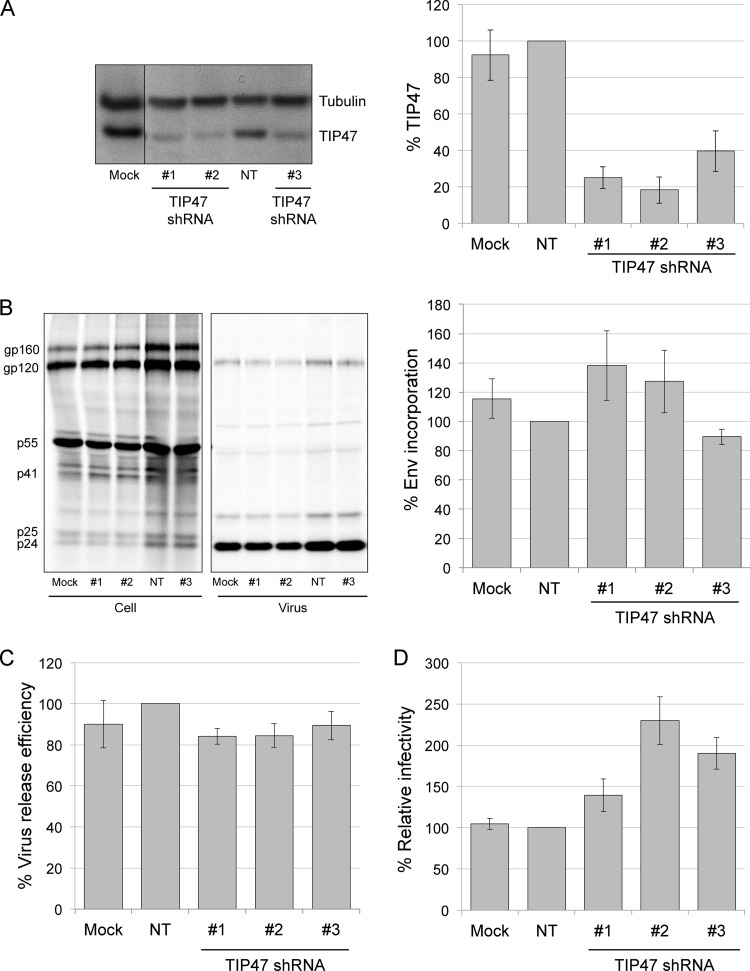Fig 7.
Depletion of TIP47 in Jurkat cells does not disrupt HIV-1 Env incorporation, infectivity, or virus release. (A) TIP47 depletion in Jurkat cells using shRNAs. TIP47 and tubulin were detected by Western blotting of puromycin-resistant Jurkat cells after transduction with TIP47-targeted shRNAs or nontargeting (NT) shRNA. Average protein levels relative to tubulin are shown. Error bars indicate SEM (n = 3). (B) HIV-1 Env incorporation efficiency in TIP47-depleted Jurkat cells. Cells were metabolically radiolabeled with [35S]Cys; cell and virus lysates were immunoprecipitated with HIV-Ig (left panel). Average levels of Env incorporation are shown (right panel). Error bars indicate SEM (n = 4). Using a paired t test, none of the results were considered significantly different from the NT control results (P > 0.05). (C) HIV-1 release efficiency in TIP47-depleted Jurkat cells. Average virus release efficiency normalized to NT shRNA-transduced cells is shown. Error bars indicate SEM (n = 4). Using a paired t test, none of the results were considered significantly different from the NT control results (P > 0.01). (D) Infectivity of HIV-1 produced from TIP47-depleted Jurkat cells. Infectivity was detected by luciferase activity in infected TZM-bl cells, and results were averaged. Infectivity assays were performed with four different virus inputs, normalized for RT activity. Graphs show average levels of infectivity with a virus input of 25,000 RT cpm. Error bars indicate SEM (n = 4). Using a paired t test, the increases in infectivity were marginally significant relative to the controls (P = 0.1 for shRNA 2 compared to mock sample, and P = 0.02 for shRNA 2 compared to NT sample).

